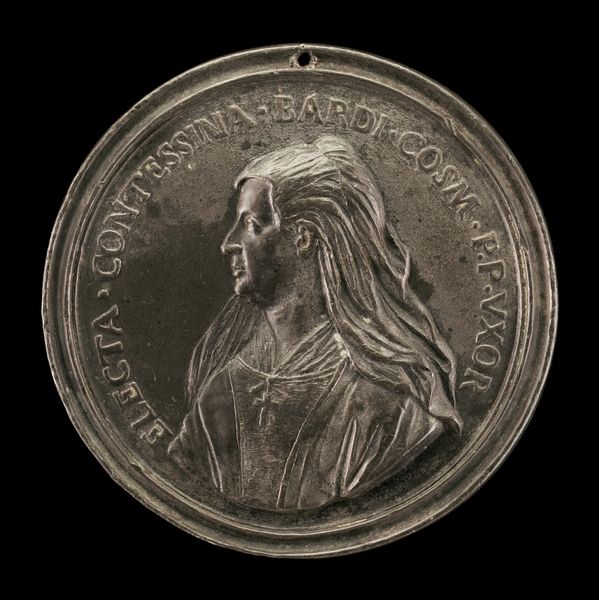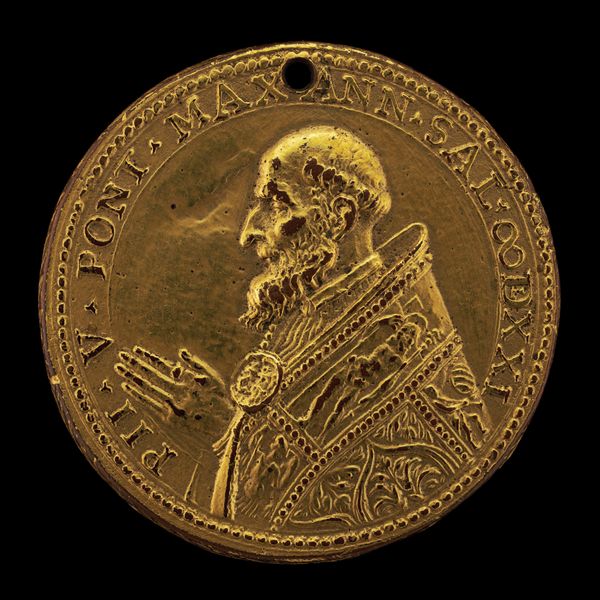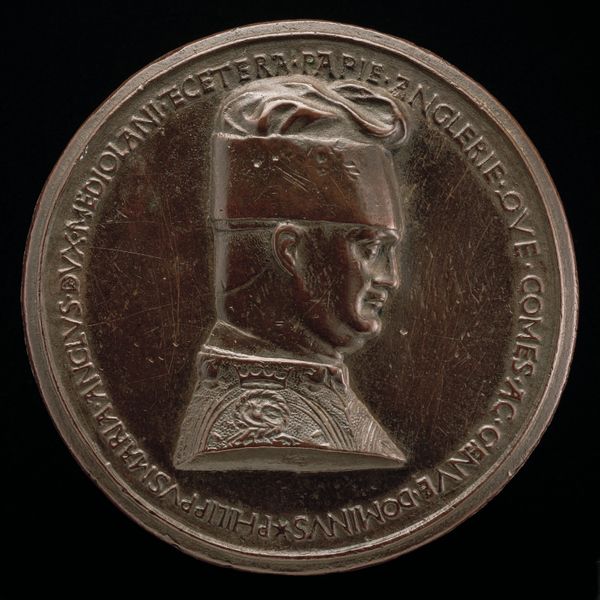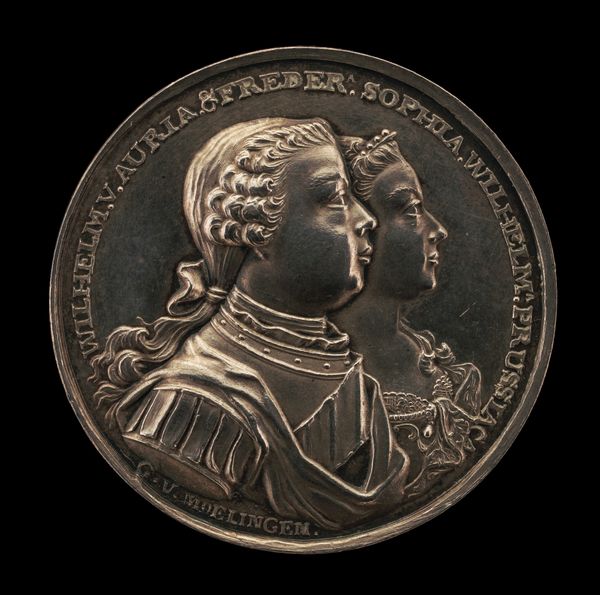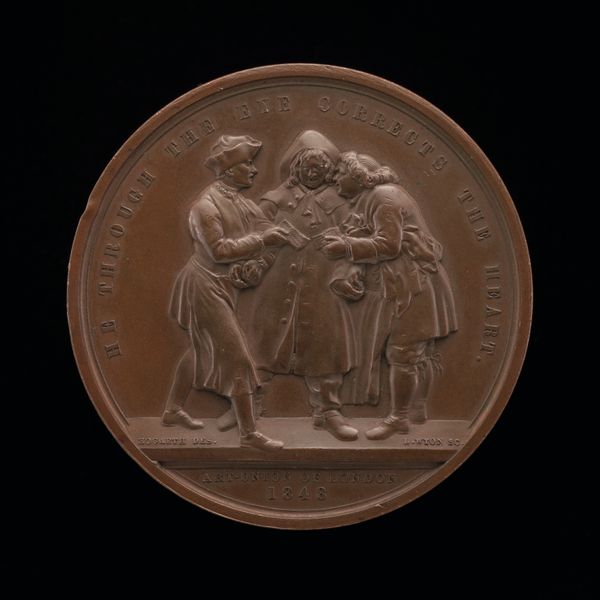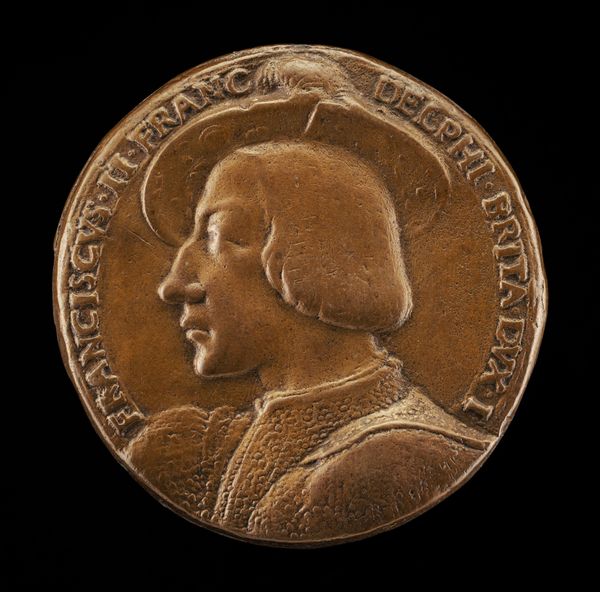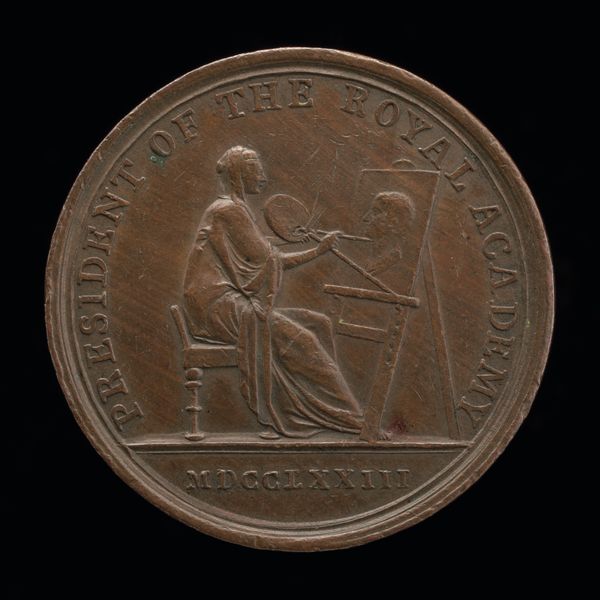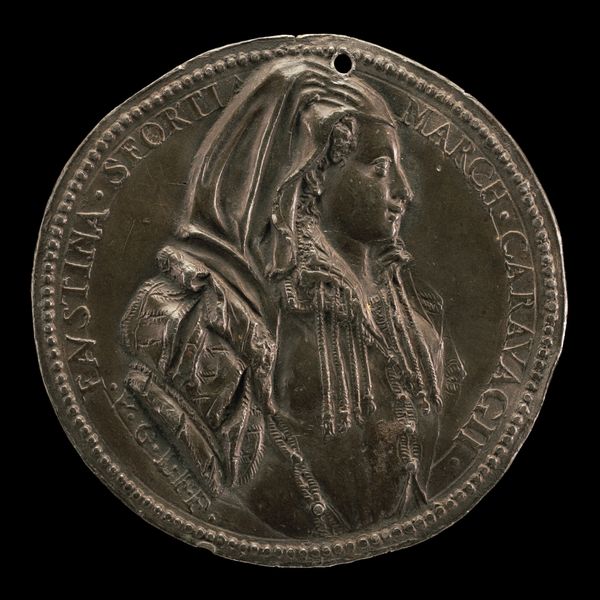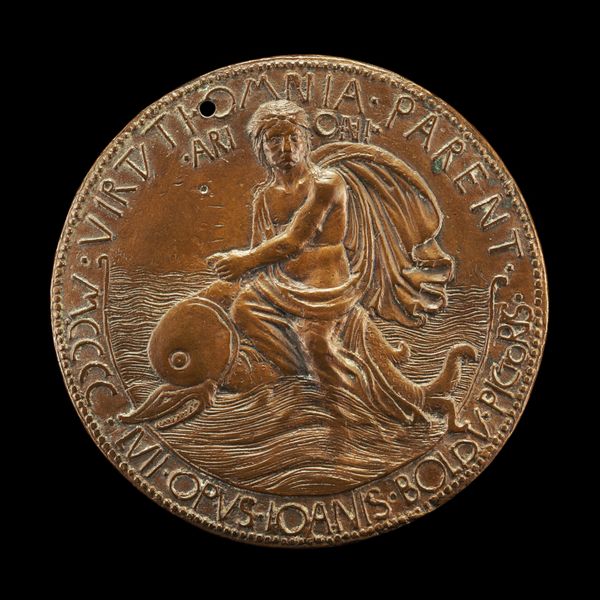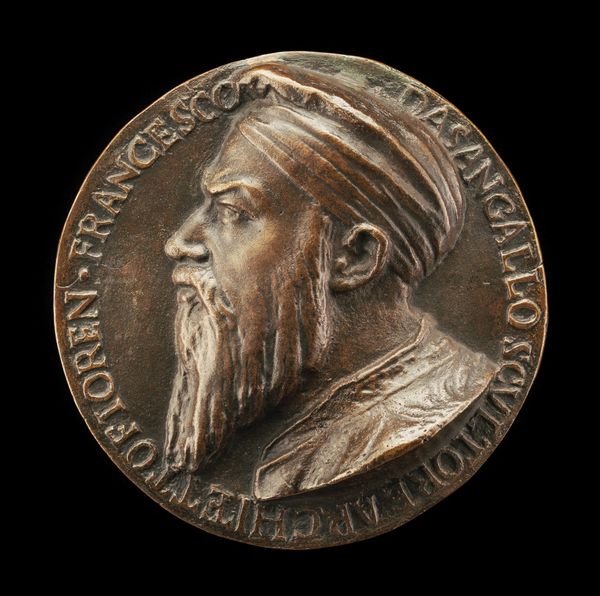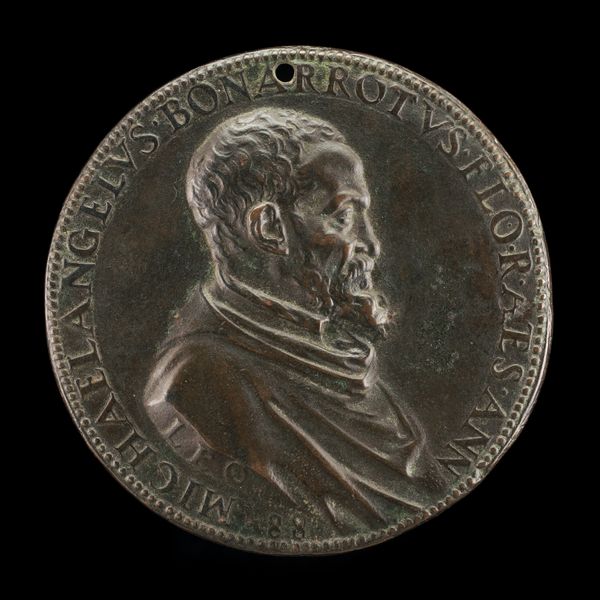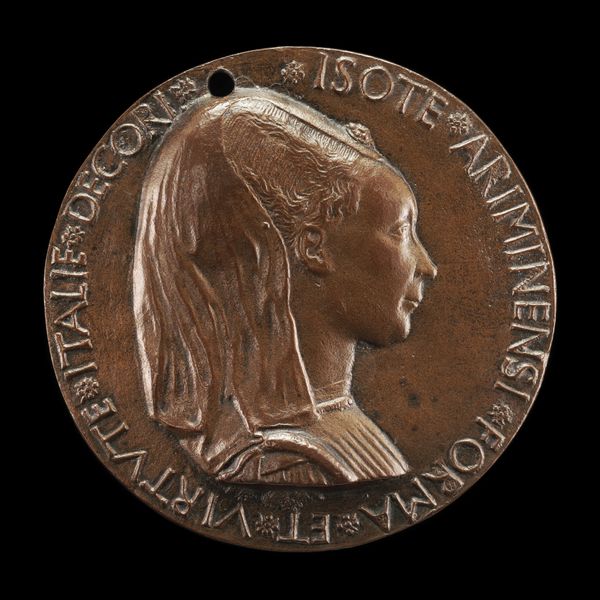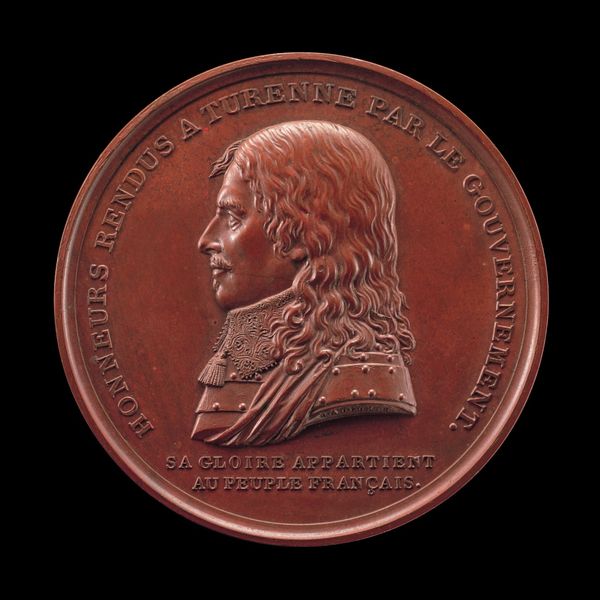![Mechtild von Seedorf and Anna Seiler [obverse] by Sebastian Burger](/_next/image?url=https%3A%2F%2Fd2w8kbdekdi1gv.cloudfront.net%2FeyJidWNrZXQiOiAiYXJ0ZXJhLWltYWdlcy1idWNrZXQiLCAia2V5IjogImFydHdvcmtzLzY0NTMyNTMwLWY1OTEtNDhmMC1hZGRjLTRkZDEyZTQyNTE3MS82NDUzMjUzMC1mNTkxLTQ4ZjAtYWRkYy00ZGQxMmU0MjUxNzFfZnVsbC5qcGciLCAiZWRpdHMiOiB7InJlc2l6ZSI6IHsid2lkdGgiOiAxOTIwLCAiaGVpZ2h0IjogMTkyMCwgImZpdCI6ICJpbnNpZGUifX19&w=3840&q=75)
metal, sculpture
#
portrait
#
neoclacissism
#
metal
#
stone
#
sculpture
#
sculpture
#
statue
Dimensions: overall (diameter): 5.14 cm (2 in.) gross weight: 68.44 gr (0.151 lb.) axis: 12:00
Copyright: National Gallery of Art: CC0 1.0
Curator: So, here we have "Mechtild von Seedorf and Anna Seiler [obverse]," a metal sculpture created in 1818 by Sebastian Burger, embodying a Neoclassical style. The piece features a bas-relief profile of two women on what appears to be a commemorative coin or medallion. Editor: My first thought is how severe and formal the figures appear. It reminds me of ancient Roman portraiture, but with a slightly softer, almost wistful quality in the way the light catches the folds of their garments. It's got a certain stoicism, don't you think? Curator: Absolutely. The profiles, common in Neoclassical art, link back to a classical interest in rationality and idealized form. However, this sculpture presents more than mere aesthetic homage. The names inscribed along the edge, "Mechtild von Seedorf 1286 Anna Seiler 1354," embed it within a specific cultural memory. These weren't just any women; they were figures of significance from Bern's history, remembered for centuries. Editor: Yes, that makes me think—what’s the story behind them? Were they royalty, philanthropists, revolutionaries? The starkness of the presentation almost makes it feel like a monument or memorial, demanding respect for the people they represent. The years on the coin place them centuries before it was made. It's like gazing back through layers of time. Curator: Mechtild von Seedorf founded the Ospedale di Santa Maria in Bern in 1286 and Anna Seiler, around 1354, established the Bernese hospital. The coin becomes a vehicle for not just memorializing their deeds but reminding people of them. Look how Burger subtly plays with shadow to grant the women weight, moral seriousness, as civic icons. Editor: Looking at how closely their faces are aligned, and the way their draped clothing is formed as a whole piece. You feel this unity—shared purpose somehow. There’s a quiet power in the modesty of their features. Were there any political implications to their deeds, and, subsequently, to their image? Curator: By the early 19th century, Switzerland sought to forge its sense of national and cultural identity, and recalling exemplary local leaders was instrumental. Burger, here, doesn’t just portray two figures from the past but provides tangible symbols of how acts of charity, service, and perhaps most powerfully female civic engagement might stand as a lasting national legacy. Editor: Interesting. The work, which at first viewing came across to me as very formalistic and almost cold, turns out to reveal this layered tribute and the social statement from beyond the grave! Curator: Indeed. An excellent reminder that images often serve as containers and conveyors of cultural memory, echoing long past their creation.
Comments
No comments
Be the first to comment and join the conversation on the ultimate creative platform.
